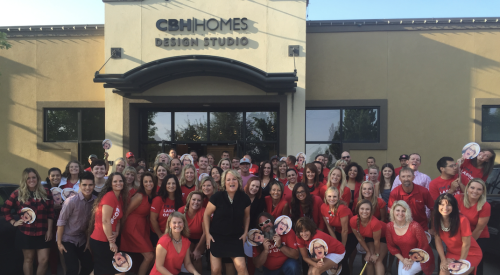| PB Builder of the Year The Olson Co. is a good example of alignment: a firm that creates value by infusing the whole organization with a sense of mission. A success story is Laurel Walk in Brea, Calif.
|
He’s up there in Big Horn, Wyoming, and he doesn’t come out of the mountains much anymore. But longtime housing industry consultant Steve Dudley hasn’t lost his Midas touch for cutting to the core of challenges facing builders.
"In this e-commerce age, they’ve got a lot more tools to work with," says Dudley, "but they’re still making the same basic mistake. Even if they know the exact nature of the business they want to do, they don’t communicate mission, strategy and methods to the people on the firing line."
The concept is called organization alignment, and Dudley believes lack of alignment is the critical flaw that keeps builders from the mother lode of profits they could tap. "Every person in the company needs to understand how each minute of his or her time contributes to reaching the goals set for the company," Dudley says. "Walk into most builder sales offices and you’ll see a perfect example of misalignment."
That would be sales agents who greet every prospect with a features list and a canned sales presentation. What they should have, says Dudley, is razor-sharp listening skills and a thorough knowledge of their firm’s competitive niche -- the carefully formulated strategy for how this builder maximizes value for customers.
"Sustained profits come from a profound understanding of how value is created, and the ability to envision and capitalize on opportunity," Dudley reasons. "The spread between perceived value and sales price drives velocity, and the spread between sales price and cost determines profitability. Optimizing profitability and velocity drives total net profit and return on investment."
It all sounds so simple, but making it work in a growing company is the mother of all management challenges. The bigger the company gets, the more people are involved and the harder it is to keep everybody targeting the core mission of the organization.
Dudley is impressed with the ability of The Olson Co., PB’s recently unveiled Builder of the Year 2000, to keep a large and growing work force focused on a complex mission to create value for both cities and home buyers in the urban infill market niche. "What Steve Olson seems to look for and cultivate in his people is a sense of community service," says Dudley. "He does a great job communicating throughout his company that the two sets of customers are actually complementary, not adversarial. It’s an inspired organization with a very special mission and culture, and I notice that they sell houses very differently from most builders.
"Their marketing is location-driven and targets the integration of their development into the fabric of the existing community. They sell the unique ways they create value for both buyers and the surrounding city, and elevations and floor plans are only a small part of it.
"That’s alignment," says Dudley.
What can our readers do to improve alignment in their home building companies?
"Start with writing out for everyone the strategy conceived by senior management," says Dudley. "Every development should have a strategic positioning statement that gives the rationale and methods of value creation for targeted customers."
Consider the "soul" of the company and what energizes you and your teams about the value creation opportunities in the locations where you do business, says Dudley. "Then determine the drivers of the strategy and core competencies you need to develop within the company to create a value/cost spread and to reliably and consistently liquidate value."
Dudley always returns to communication as the key to creating and maintaining alignment in a home building company. "We talk a lot about creating a ‘learning organization’ and entrepreneurial thinking throughout the company. Alignment is what that’s all about." If every person has a clear understanding of what he or she does, and how it fits into the big picture, the organization is less likely to drift into inefficiencies as it grows.
"Write down your own value creation themes," says Dudley, "then look at every department and individual to see how what they do reinforces those themes."












